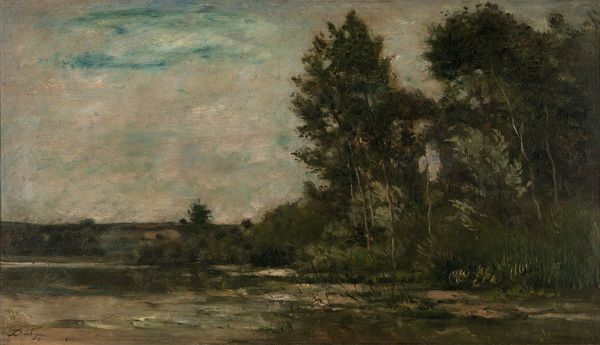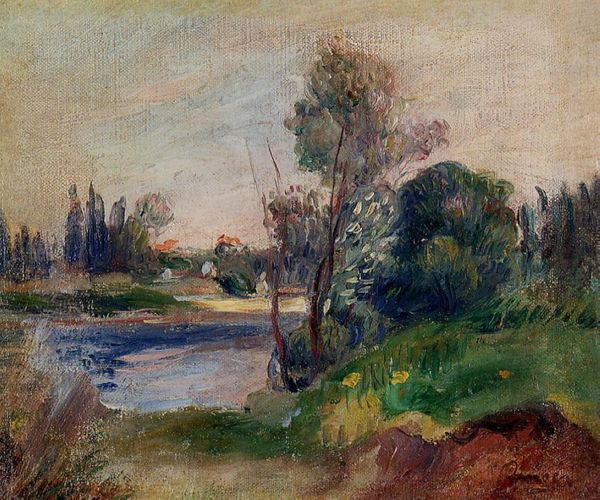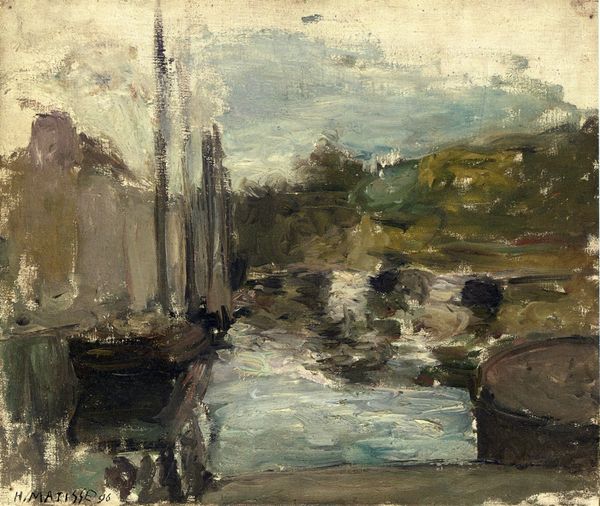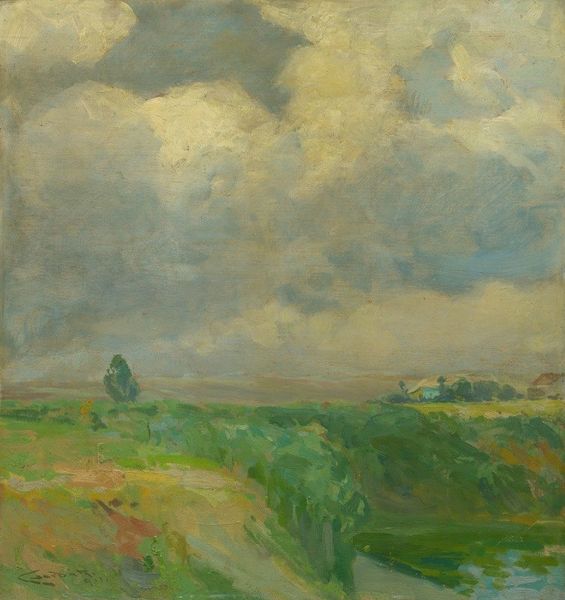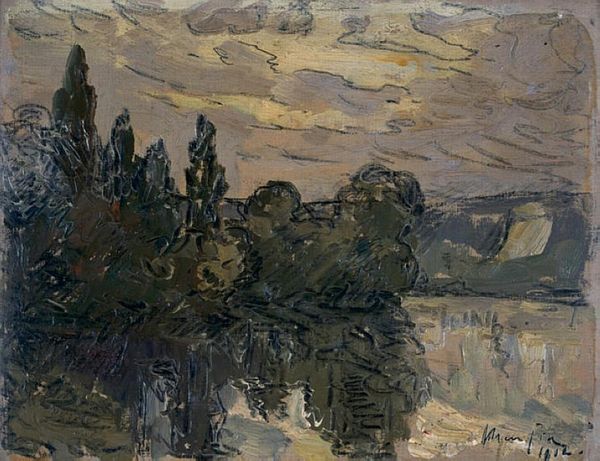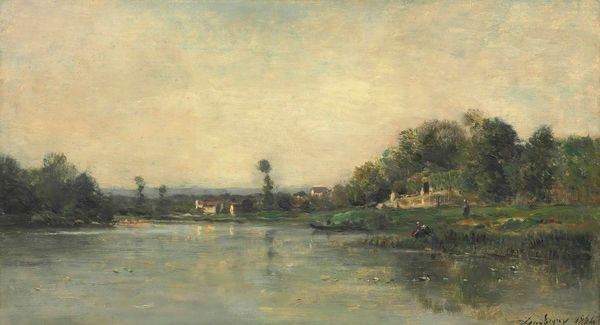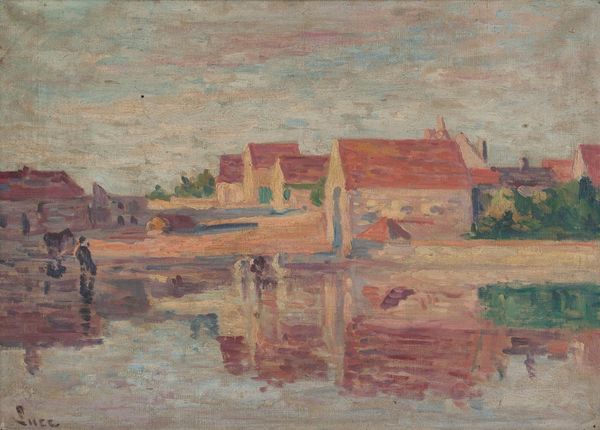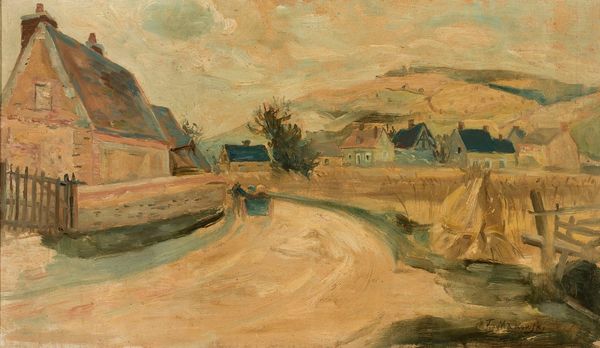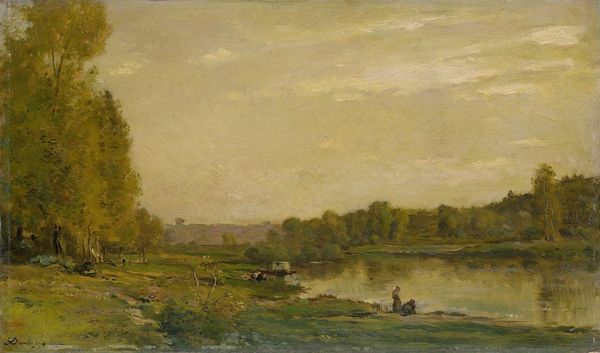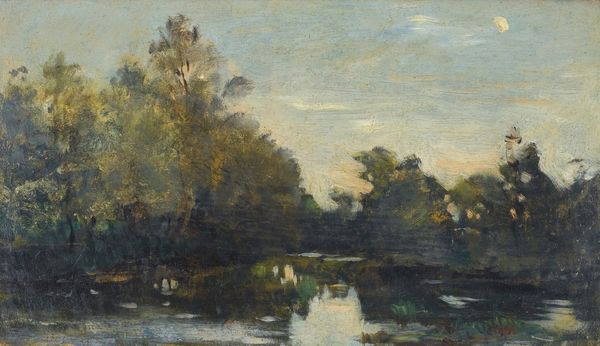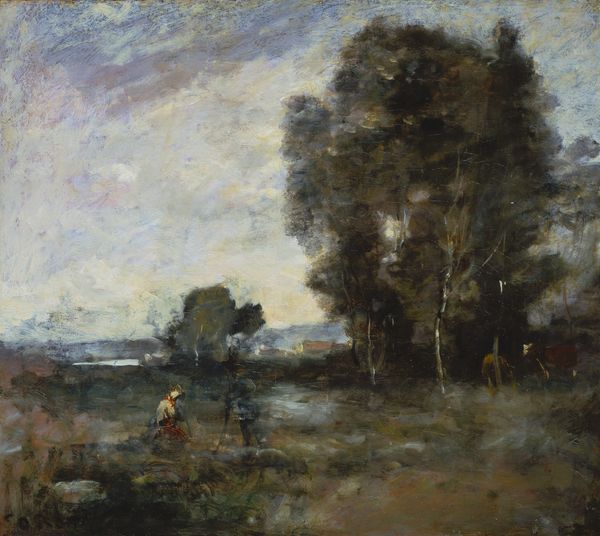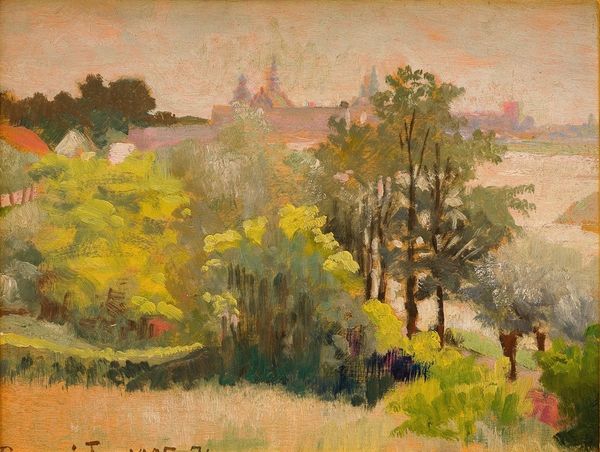
Copyright: Public Domain: Artvee
Curator: Looking at Walter Kurt Wiemken’s "Evening on the Seine," painted around 1930, what strikes you first? It’s an oil painting, quite small, likely done en plein air. Editor: A stillness. Despite the impressionistic brushstrokes, a very pronounced stillness. And an odd somber quality for a scene presumably about evening. It almost feels like a memory of an evening, rather than a depiction. Curator: The Seine, historically and culturally, certainly carries immense weight. It’s not just a river; it's a symbol of Parisian life, a witness to revolutions, artistic movements. Wiemken's choice, therefore, situates this work within that legacy, wouldn't you agree? The haze sort of hints it is both past and present. Editor: Absolutely. And while many artists celebrated the Seine as a bustling hub, this image emphasizes something more private, almost melancholic. The muted color palette—those grays and greens—it suggests a burdened reflection more than a vibrant cityscape. Perhaps reflective of some socioeconomic tension of the 1930's? Curator: Perhaps. One could delve into how Wiemken utilizes shadow and light here, couldn't one? Notice how the darker forms on the left – are those haystacks?– anchor the composition, contrasting with the ethereal glow of the sky, to the point where the landscape almost feels dreamlike, more about mood than precise detail. The impressionist label is a start, but not complete. Editor: Yes, I agree. The haziness, blurring the details; it transforms the river into a mirror reflecting internal feelings more than external reality. We aren’t shown people in leisure, pleasure. It hints at something more personal from Wiemken’s perspective. Curator: Which returns us to your initial impression. The image speaks to cultural memory, personal history intertwined with broader socio-political currents…it creates a contemplative experience. Editor: Right, it prompts us to consider how individual artists translate collective emotions, using familiar images to express profound interior landscapes. It invites a moment of solitary, even quiet, contemplation. Curator: Indeed, seeing beyond the immediate scene reveals how it becomes a portal to deeper psychological or historical reflection. Editor: Ultimately making even the quietest landscape a potent historical document.
Comments
No comments
Be the first to comment and join the conversation on the ultimate creative platform.
